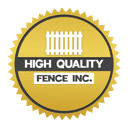Are you planning to install a fence on your property? Before you break ground, it’s essential to understand the regulations governing fence height in your area. Local ordinances vary widely, and knowing the rules can save you time, money, and potential headaches down the road.
Fence height regulations are often established to maintain neighborhood aesthetics, ensure safety, and protect property values. These regulations typically dictate the maximum allowable height for fences in different zones, such as residential or commercial areas. Understanding these guidelines upfront can help you select the right fence design and height that complies with local regulations while meeting your needs for privacy and security.
Researching Local Regulation
Before undertaking any fence project, it’s paramount to thoroughly explore the regulations dictating fence height within your locality. These regulations exhibit notable variations contingent on your area, ranging from stringent limitations to more lenient ones. A comprehensive examination of these rules is imperative to grasp what’s allowable and sidestep any potential infringements, which could result in hefty fines or mandated alterations.
This investigative process typically entails scrutinizing your local zoning ordinances, reaching out to your municipal planning or building department, or seeking guidance from a seasoned professional well-versed in local regulations. By investing time and effort into this preliminary research, you can embark on your fence project confidently and ensure compliance with the pertinent legal framework.
Types of Fence Height Restrictions
When it comes to understanding fence height restrictions, it’s crucial to grasp the various types of limitations that may apply to your property. Here’s a breakdown of the key categories:
- Maximum Allowable Height: This regulation sets the tallest fence permissible in a given area, typically ranging from four to eight feet. It ensures consistency and uniformity in neighborhood aesthetics while balancing privacy needs.
- Setback Requirements: These guidelines specify how far back from property lines or structures a fence must be installed. They prevent fences from encroaching on public rights-of-way and maintain clear sightlines for pedestrians and motorists.
- Exceptions for Certain Fence Types: Some jurisdictions provide exemptions or special considerations for specific fence types, such as decorative or agricultural fences. These exceptions accommodate diverse property needs while still adhering to regulatory standards.
- Location-Based Regulations: Certain locations, such as along roads or near intersections, may have unique regulations governing fence height. These rules prioritize safety and visibility, reducing the risk of accidents and ensuring accessibility for emergency services.
- Design Guidelines and Architectural Standards: Commercial properties may be subject to specific design guidelines or architectural standards dictating fence materials, colors, and styles. These standards contribute to the overall visual appeal and cohesion of commercial areas, enhancing the built environment.
Understanding these types of fence height restrictions is essential for property owners seeking to install or modify fences. By familiarizing yourself with these regulations, you can ensure compliance, avoid potential violations, and make informed decisions that align with your property’s needs and regulatory requirements.
Residential Zone Guidelines
In residential areas, fence height regulations are designed to achieve a delicate equilibrium between privacy enhancement and the preservation of neighborhood aesthetics. These guidelines typically establish maximum allowable heights for fences along property lines, typically falling within the range of four to eight feet. Furthermore, regulations often specify setbacks from front yards, side yards, and rear yards to prevent fences from encroaching on public rights-of-way or obstructing sightlines for pedestrians and motorists.
For homeowners embarking on fence installation or modification projects, a thorough understanding of these residential zone guidelines is indispensable. It ensures compliance with local regulations while enabling informed decisions that cater to both functional needs and the visual harmony of the neighborhood.
Commercial Zone Regulations
In commercial zones, fence height regulations tend to be more stringent compared to residential areas, primarily due to concerns regarding pedestrian safety, traffic visibility, and aesthetic cohesion. These regulations often impose lower maximum height limits and stricter setback requirements on commercial fences to prevent obstruction of business operations and maintain the area’s visual appeal.
Moreover, commercial properties are frequently subjected to specific design guidelines and architectural standards governing fence materials, colors, and styles. Compliance with these regulations not only ensures safety and functionality but also contributes to the overall attractiveness and professionalism of commercial spaces, reinforcing their role as vibrant hubs of economic activity.
Understanding Variance Procedures

In some cases, property owners may seek variances from local fence height regulations to accommodate unique circumstances or address specific needs. Variance procedures typically involve submitting a formal application to the local zoning board or planning commission, explaining the reasons for the requested deviation from standard regulations, and potentially attending a public hearing to present your case.
While variances can provide flexibility in certain situations, they are not guaranteed, and approval is contingent on factors such as the impact on neighboring properties, adherence to the broader goals of the zoning ordinance, and public input.
Safety Considerations
When it comes to installing fences, safety considerations are paramount to ensure the well-being of both property owners and the surrounding community. Here are some essential safety factors to keep in mind:
- Visibility for drivers and pedestrians: Ensure that fences near roadways and intersections are of an appropriate height to maintain clear sightlines for drivers and pedestrians, reducing the risk of accidents.
- Access to emergency services: Maintain adequate setback distances to prevent fences from obstructing access to fire hydrants, utility meters, or other essential infrastructure, facilitating timely responses from emergency services.
- Avoiding trip hazards: Install fences securely to prevent them from leaning or collapsing, reducing the risk of trip hazards for pedestrians and minimizing the likelihood of injuries.
- Child safety: Consider installing fences with features such as self-latching gates and smooth surfaces to prevent children from climbing over or getting trapped, enhancing overall safety for families with young children.
- Proper lighting: Ensure that fences are well-lit, especially in areas with foot traffic or during nighttime hours, to enhance visibility and deter potential intruders, promoting a safer environment for everyone.
Safety is paramount when it comes to fence installation, and by addressing these considerations, property owners can create a secure and welcoming space for themselves and their neighbors.
Impact on Property Values
The height and design of fences can significantly impact property values by influencing curb appeal, privacy levels, and overall aesthetics. In some cases, well-designed and properly maintained fences can enhance property values by improving the visual appeal of a home or delineating boundaries clearly.
However, excessively tall or unsightly fences may have the opposite effect, detracting from the attractiveness of a property and potentially lowering its market value. Understanding the relationship between fence height regulations and property values is essential for homeowners looking to make informed decisions about fence installation or modification.
Privacy Concerns
One of the primary reasons property owners install fences is to increase privacy by creating barriers between their property and neighboring homes or public spaces. Fence height regulations play a crucial role in balancing privacy concerns with other considerations such as safety, aesthetics, and community cohesion. While taller fences may provide greater privacy, they can also create feelings of isolation or block sunlight and airflow if not carefully positioned and designed.
By considering these privacy concerns alongside local regulations, property owners can select fence heights and styles that strike the right balance between privacy and other factors.
Choosing the Right Fence Height
Selecting the appropriate fence height requires careful consideration of various factors, including your specific needs, local regulations, and the surrounding environment. For instance, if privacy is a top priority, you may opt for a taller fence, but if maintaining views or preserving open sightlines is essential, a lower fence or decorative alternative might be more suitable.
Additionally, factors such as terrain, landscaping, and the presence of existing structures can influence the optimal fence height for your property. By weighing these considerations thoughtfully, you can choose a fence height that meets your functional requirements while complementing the overall aesthetics of your property.
Consulting with Professionals
Navigating fence height regulations and making informed decisions about fence installation can be complex, especially for property owners unfamiliar with local ordinances or zoning requirements. In such cases, consulting with professionals such as landscape architects, fencing contractors, or zoning specialists can provide valuable guidance and expertise.
These professionals can help you understand your rights and obligations under local regulations, assess your property’s unique characteristics, and develop a customized fencing solution that meets your needs while complying with applicable laws. By leveraging their knowledge and experience, you can streamline the process of selecting and installing a fence that enhances your property’s functionality, aesthetics, and value.
Understanding fence height regulations is essential for property owners looking to install or modify fences. By researching local regulations, considering safety, privacy, and property values, and consulting with professionals, you can navigate the process effectively and ensure compliance with applicable laws. Whether you’re seeking to enhance privacy, increase security, or improve curb appeal, informed decision-making is key to achieving your goals while adhering to regulatory requirements.
Ready to install a fence that meets your needs while complying with local regulations? Contact High Quality Fence today at 209-815-9015 or email us at info@highqualityfence.com. Our team of experts can assist you in selecting the right fence height, design, and materials for your property, ensuring a seamless and satisfying experience from consultation to installation. Don’t let fence height regulations hold you back—reach out to High Quality Fence and elevate your property’s functionality and aesthetics today!


